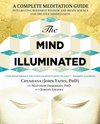The Mind Illuminated - A Complete Meditation Guide Integrating Buddhist Wisdom and Brain Science
readwise.io
Saved by Daniel Wentsch and
The Mind Illuminated - A Complete Meditation Guide Integrating Buddhist Wisdom and Brain Science

Saved by Daniel Wentsch and
You have mastered Stage One when you never miss a daily practice session except when absolutely unavoidable, and when you rarely if ever procrastinate on the cushion by thinking and planning or doing something besides meditating. This Stage is the most difficult to master, but it can be done in a few weeks. By following the basic instructions and c
... See moreThe condition in which the mind “stands back” to observe its own state and activities is called metacognitive introspective awareness. 13 Attention, on the other hand, can’t observe activities of the mind because its movements and abstracting of information from awareness are activities of the mind. In other words, we can’t attend to attention. Whe
... See moreThe two main objectives of meditation practice are: Developing stable attention Cultivating powerful mindfulness that optimizes the interaction between attention and awareness.
You’ll have to overcome four major obstacles: not enough time, procrastination, reluctance and resistance to practicing, and doubt.
Stable attention is the ability to intentionally direct and sustain the focus of attention, as well as to control the scope of attention. Intentionally directing and sustaining attention simply means that we learn to choose which object we’re going to attend to, and keep our attention continuously fixed on it. Controlling the scope of attention mea
... See moreAs fellow teacher Stephanie Nash is fond of saying, “A good meditation is one you did—the only bad meditation is one you didn’t do.” Take her wise advice to heart.
This is the very essence of meditation: we reprogram unconscious mental processes by repeating basic tasks over and over with a clear intention.
Awakening from our habitual way of perceiving things requires a profound shift in our intuitive understanding of the nature of reality. Awakening is a cognitive event, the culminating Insight in a series of very special Insights called vipassana. This climax of the progress of Insight only occurs when the mind is in a unique mental state called śam
... See moreWhat we make of our life—the sum total of thoughts, emotions, words, and actions that fill the brief interval between birth and death—is our one great creative masterpiece. The beauty and significance of a life well lived consists not in the works we leave behind, or in what history has to say about us. It comes from the quality of conscious experi
... See more